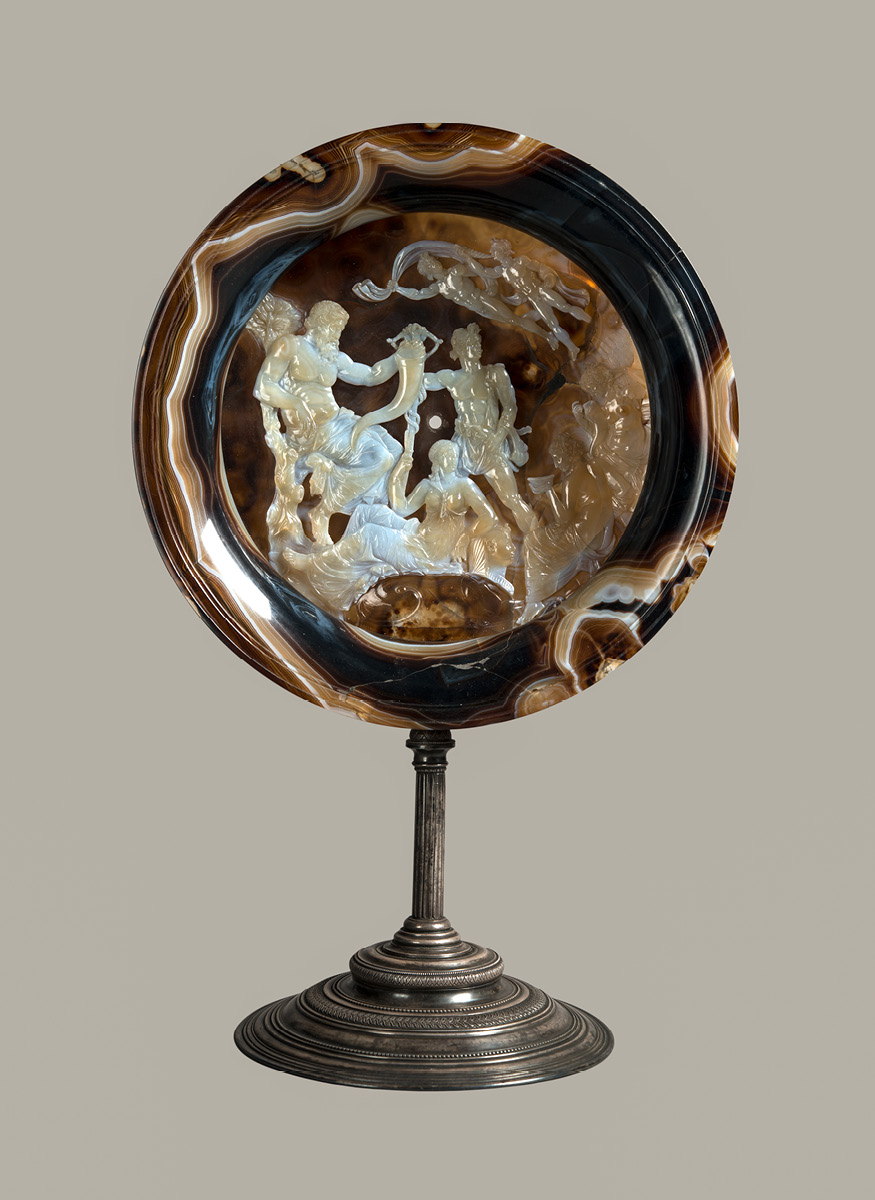Farnese gems
The collection of gems housed by the National Archaeological Museum of Naples boasts more than 2000 examples. It stands out both for the incredible artistic quality and for exhibiting, together with the 350 gems, found in archaeological sites of the Campania region, the Farnese collection, one of the most important historic collection of gems ever created in Italy. The Farnese collection, started in the town of Parma in the mid-17th century, had incorporated gemstones belonging to other 15th century’s famous private collections, in particular the one formed by the Venetian pope Paolo II Barbo and the other one gathered by Lorenzo de’ Medici. The gemstones later collected by the cardinals Ranuccio and Alessando Farnese and by their librarian Fulvio Orsini added up to the original core.
King Charles III of Bourbon inherited the collection and in 1736 moved it to Naples, where, about two decades later, it was hosted in the Villa of Capodimonte. When the French rule started in 1806, king Ferdinand IV of Bourbon fled to Palermo and took it with him, therefore only in 1817 the collection came back to Naples and was housed in the Royal Bourbon Museum. The current gallery of ancient and modern gemstones, on the ground-floor of the Museum, presents a selection of the most significant models. Room IX (9) displays the corpus associated with Ranuccio and Alessandro Farnese, organized according to the iconographic series; room X (10) exhibits the other most important historic collections, inherited by the Farnese family: Barbo’s and Lorenzo de’ Medici’s groups of gemstones, displayed according to the masters and the ages in which they were produced. Fulvio Orsini’s treasure, is displayed as to emphasize the antiquarian’s interest for myths and iconography.
The most extraordinary piece in the collection, the so called Farnese Bowl, is the largest and most famous cameo of antiquity. The sardonyx bowl was manufactured in Alexandria of Egypt and dates back from the late 2nd century BC to the 1st century BC.










